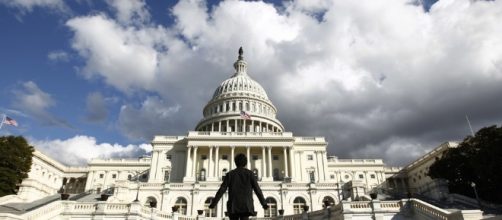Perhaps Aziz Ansari said it best during his opening monologue as he hosted “Saturday Night Live.” Change doesn’t come from presidents. Change comes from large groups of angry people. And when it comes to something not liked, America has a centuries-long record of clear-eyed citizens marching in the streets, reminding lawmakers with, “We are the people.” In other words, “We can vote you in and we can vote you out” and politicians, like any other employed person, want to keep their jobs.
The concept of folks protesting about one issue or another, is nothing new.
What maybe different is how three women, Tamika Mallory, Carmen Perez and Linda Sarsour posted a call on Facebook for women to converge upon the nation’s capital on January 21, 2017. They initially expected around 200,000 participants, but what started as one country’s expectation turned into a remarkable show of force which amounted to almost 5 million participants globally. Here’s a look at past organized events:
The 1913 Women’s Suffrage Movement
On March 3, 1913, a woman named Inez Milholland mounted a horse to lead American women’s first huge march, demanding their right to vote. Five thousand women bravely walked past screams of insults. One police officer told a woman that if his wife was a part of their group he would break her head.
Over 100 women were injured and hospitalized. Although they fought for suffrage since 1848, it was the 1913 march that swayed politicians into passing the 19th Amendment.
The 1932 Bonus Army March
A 1924 law guaranteed veterans bonus payments in 1945, but the Great Depression forced the servicemen to need them earlier. When approximately 20,000 World War I veterans gathered to protest in Washington on July 28, 1932, General Douglas MacArthur brought in tanks and gas bombs and gave the men 30 minutes to disperse.
Two people died, but the event lasted for weeks and eventually pushed Congress into passing the G.I. Bill.
The 1963 March on Washington and the 1969 Moratorium to end the Vietnam War
On August 28, 1963, the National Mall swelled with more than 200,00 people to hear Martin Luther King, Jr.’s iconic “I Have a Dream” speech. King’s leading the charge to fight for jobs and freedom led to Congress passing the civil rights bill.
On November 15, 1969, three drummers led a procession of an estimated 250,000 antiwar activists down Pennsylvania Avenue, calling for withdrawal of troops in Vietnam. At the time, a large portion of Americans grew weary of President Nixon’s policy of slow withdrawal while they had to bury loved ones who were killed in action. Nixon may have ignored the cries of the people and spent the day watching football, as confirmed by the White House, but he was eventually impeached and gone in 1974. The Vietnam war finally ended a year later.

